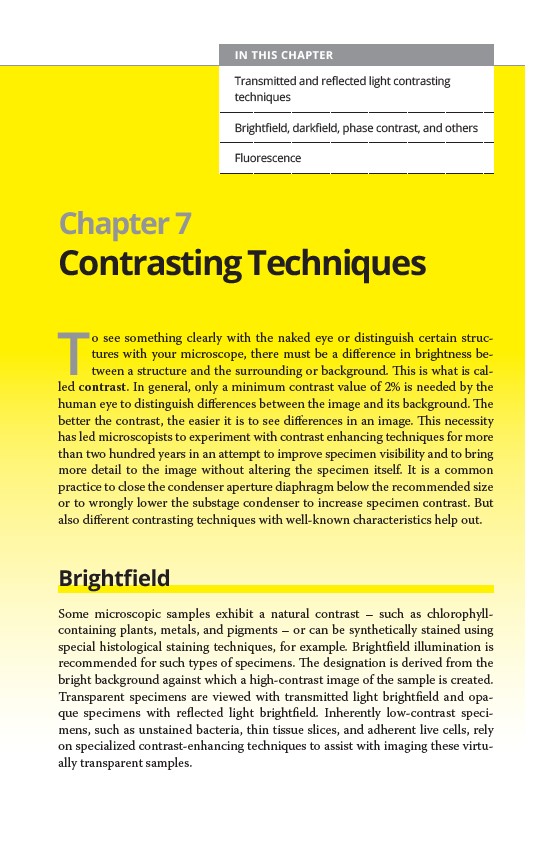
Chapter 7
Contrasting Techniques
To see something clearly with the naked eye or distinguish certain struc-
tures with your microscope, there must be a difference in brightness between
a structure and the surrounding or background. This is what is called
contrast. In general, only a minimum contrast value of 2% is needed by the
human eye to distinguish differences between the image and its background. The
better the contrast, the easier it is to see differences in an image. This necessity
has led microscopists to experiment with contrast enhancing techniques for more
than two hundred years in an attempt to improve specimen visibility and to bring
more detail to the image without altering the specimen itself. It is a common
practice to close the condenser aperture diaphragm below the recommended size
or to wrongly lower the substage condenser to increase specimen contrast. But
also different contrasting techniques with well-known characteristics help out.
Brightfield
Some microscopic samples exhibit a natural contrast – such as chlorophyll-
containing plants, metals, and pigments – or can be synthetically stained using
special histological staining techniques, for example. Brightfield illumination is
recommended
for such types of specimens. The designation is derived from the
bright background against which a high-contrast image of the sample is created.
Transparent specimens are viewed with transmitted light brightfield and opaque
specimens with reflected light brightfield. Inherently low-contrast specimens,
such as unstained bacteria, thin tissue slices, and adherent live cells, rely
on specialized contrast-enhancing techniques to assist with imaging these virtually
transparent
samples.
IN THIS CHAPTER
Transmitted and reflected light contrasting
techniques
Brightfield, darkfield, phase contrast, and others
Fluorescence